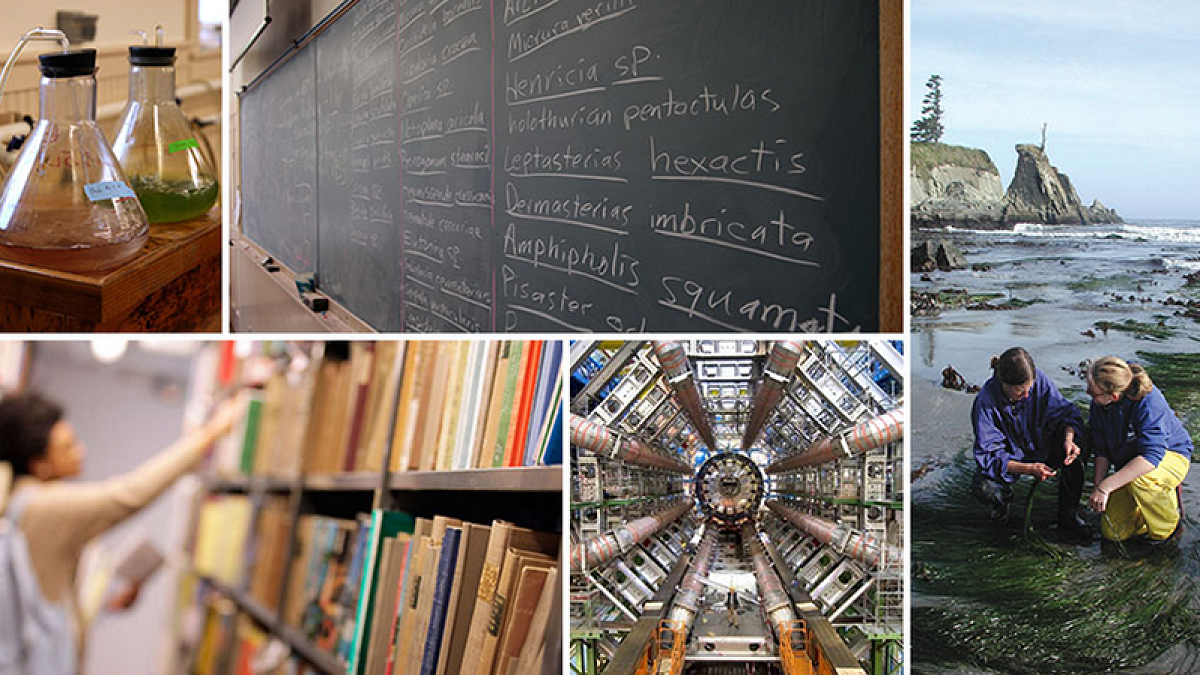Research and innovation at the University of Oregon continued to fuel the state’s economy in 2016-17, when the UO landed nearly $124 million in competitive grants, contracts and licensing.
According to the latest statistics released by the UO’s Office of the Vice President for Research and Innovation, UO researchers brought in $114.9 million in grants, contracts and other competitive awards. UO innovators also contributed $8.8 million in licensing revenue during the 2017 fiscal year, the office reported.
Other notable numbers in the just-released UO Sponsored Projects Services’ FY17 Annual Report include a tally of total federal research awards. All told, the university brought in $93.6 million in federal funding, which accounted for 81.5 percent of the UO’s total grants, contracts and other competitive awards in 2016-17.
“The sum total of research and innovation activity over the past year reflects the talent and dedication of our outstanding faculty members, who conduct transformative research and make exciting discoveries every day on this campus,” said David Conover, UO’s vice president for research and innovation. Conover will provide more details on the FY17 research numbers and look ahead to the future of research and innovation at the UO in a presentation before the UO research community. The event is scheduled for 3 p.m. on Tuesday, Oct. 31, in the Crater Lake South Room in the Erb Memorial Union. For more information, visit the Office of the Vice President for Research and Innovation website.
Research expenditures, which represent the university’s spending of previously received research dollars, went up by $3.8 million last year to $111.1 million, an increase of 3.6 percent. Because awards are a leading indicator of what’s to come, Conover said, the UO can expect to see a rise in research expenditures in the coming years.
Given the reality of diminishing federal research funding in recent years, Conover said, it is remarkable that UO researchers continue to be highly successful in winning competitive federal awards. Nevertheless, he said, the UO needs to diversify research funding beyond the federal government in the coming years.
In some ways, the transformation is already happening, as reflected by the fact that nonfederal funding increased for the second year in a row. Funding from nonfederal sources — such as industry, foundations and associations — increased by 15.7 percent from the previous year, a sign that research funding sources are continuing to grow and diversify.
Conover cited other reasons to be optimistic about future research growth. He pointed to the Phil and Penny Knight Campus for Accelerating Scientific Impact, an ambitious $1 billion initiative that will fast-track scientific discoveries into innovations that improve the quality of life for people in Oregon, the nation and the world. The most substantial boost should come over the next decade, as additional, high-impact research groups join the Knight Campus.
Additionally, the UO has programs designed to attract more research-active, tenure-track faculty members. President Michael Schill has set a goal to hire many more research faculty and retain existing faculty to boost the university’s research activity and invest in the institution’s academic enterprise.
“As we continue to raise the UO’s research profile, we can expect to see more researchers and more research dollars coming to Oregon,” Conover said. “An increase in research activity doesn’t just help our university, it fuels the state’s economy by creating jobs and giving rise to new companies. Exciting new discoveries will be made on this campus that will result in new innovations and life-changing solutions to vexing challenges.”
All told, 560 new awards were received by 302 principal investigators examining everything from improving literacy to global sea level rise to prevention of stress fractures to microbial ecosystems.
Other notable numbers from last year included:
- Funding from nonfederal sources — including industry, foundations and associations — totaled $21.2 million.
- Funding from the Department of Health and Human Services, which mostly includes the National Institutes of Health, made up the largest slice of UO federal funding, accounting for 37 percent of the federal pie. The National Science Foundation provided 23 percent of the UO’s federal funding. The Department of Education accounted for 24 percent.
- The total number of active grants and contracts increased from 989 in 2016 to 992 in 2017.
On the innovation front, UO researchers made additional gains. Research discoveries are spun out into new companies that provide innovative technologies and stimulate the Oregon economy, said Chuck Williams, associate vice president for innovation.
Last year four new startup companies grew out of UO research innovations. A prime example is LingroLearning. The company creates game-based foreign language learning applications and is selling its first product, LingroToGo, in the Apple App Store.
The company’s technology was co-developed by LingroLearning and the UO’s Center for Applied Second Language Studies, one of 16 National Foreign Language Resource Centers supported by grants under Title VI of the Higher Education Act that work to increase the nation’s capacity for language teaching and learning. LingroToGo is based on the latest learning science and inspires users to master Spanish, the second-most-spoken language in the world.
Other UO innovation tallies from 2016-17 include:
- $8.86 million in licensing revenue.
- $7.73 million, or 87 percent, of licensing income was reinvested into academic units, innovators and the state of Oregon.
- 11.65 percent return on research through licensing (licensing income divided by research expenditures).
- $200,000 invested in patents and other intellectual property.
“Innovations that grew out of UO research activity in FY17 continued to support local economic development and helped maintain the state’s role as a leader in emerging industries,” Williams said. “We saw strong returns on the research investments we’ve made over the past year, and discoveries made on our campus inspired innovative new tools and technologies that we’ll be hearing more about in the years to come.”
—By Lewis Taylor, University Communications


